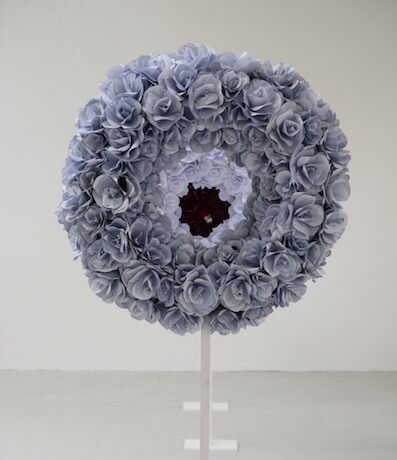Artist Feature: Nafis M. White
"A gesture of love dedicated to Black Women."
NAFIS WHITE: How does an artist create work that is rooted in a place of personal experiences, expression, shared stories, collective witnessing, inspiring change through action, while also speaking to the terror that disenfranchised communities experience in the United States in the form of institutional and systemic racism and inequality? That is my challenge, to at once witness, uplift, communicate, challenge and speak from my experiences and those of my community and give voice and visuals to those moments in our history that will hopefully resonate and stay with viewers long after they have walked away from the work.
Process is heavy in my work in terms of how I create. Perhaps that most directly speaks to my background as a sculptor and how I source materials and transform raw materials into artworks, and how much I enjoy that process of metamorphosis. In my practice the medium can be anything, whether I weld or woodwork or paper fold, the concept generally drives the material, it lets me know what it wants to become. I prefer to let things grow through intuition than to pre-prescribe the work. And sometimes I hone skills that interest me for a time and I find that occasionally they may be called upon for a piece, knitting for example or bookbinding, or paper flower making which found it’s way into a recent installation that memorialized civilians killed by police 2015, a work titled “What Cannot Be Said Will Be Wept.”
I created hundreds of a paper roses in 2016, one for each person killed during the previous year, 1208 in total, an approximate as no one knows the exact numbers. The roses were grouped by color, some were red in hue, or white, some of the paper used was data-sheets detailing the murders. I built tall funerary wreaths with the roses, six in total and varied their heights and spread them out so that viewers could walk through them. The holes in the center of the wreaths also acted as gun sights, the wreaths suddenly transformed into the trajectory of a bullet.
On the walls were family photographs of Black Women who were killed by Police, each resting on a wooden sill that varied in height based on what 10 year time frame the victim lived until, the elders seated high looking down amongst visitors, the children on low level with patrons. No matter where you walked in this room, you were never out of site of those whose lives were stolen.
Creating hundreds upon hundreds of roses myself, from a pattern I generated that involved 21 individual steps would likely have become a maddening task for many people, but for me it was an act of devotion, an act of remembrance and care. Particularly in showing love for women who look like me, who come from backgrounds like me, it was an act of love to labor in their memory. A gesture of love dedicated to Black Women.
Nafis M. White works in sculpture, photography, video, collage, sound and performance exploring issues of identity, equality, politics and landscape, using personal narratives to facilitate and build conversations with the viewer. Her approach is one that is heavily influenced by conceptualism, aesthetics and climate, both political and social, with much of her work inspired by the current Civil Rights Movement in the United States. Nafis employs many different strategies in the way that she visualizes and creates work, utilizing a multidisciplinary approach to her art making. White received her BFA from the Rhode Island School of Design in Sculpture with a Concentration in Art History before embarking on a year-long program at the University of London, Goldsmiths in the UK. Nafis is currently studying at the Rhode Island School of Design as an MFA Candidate. View more of her work here.







